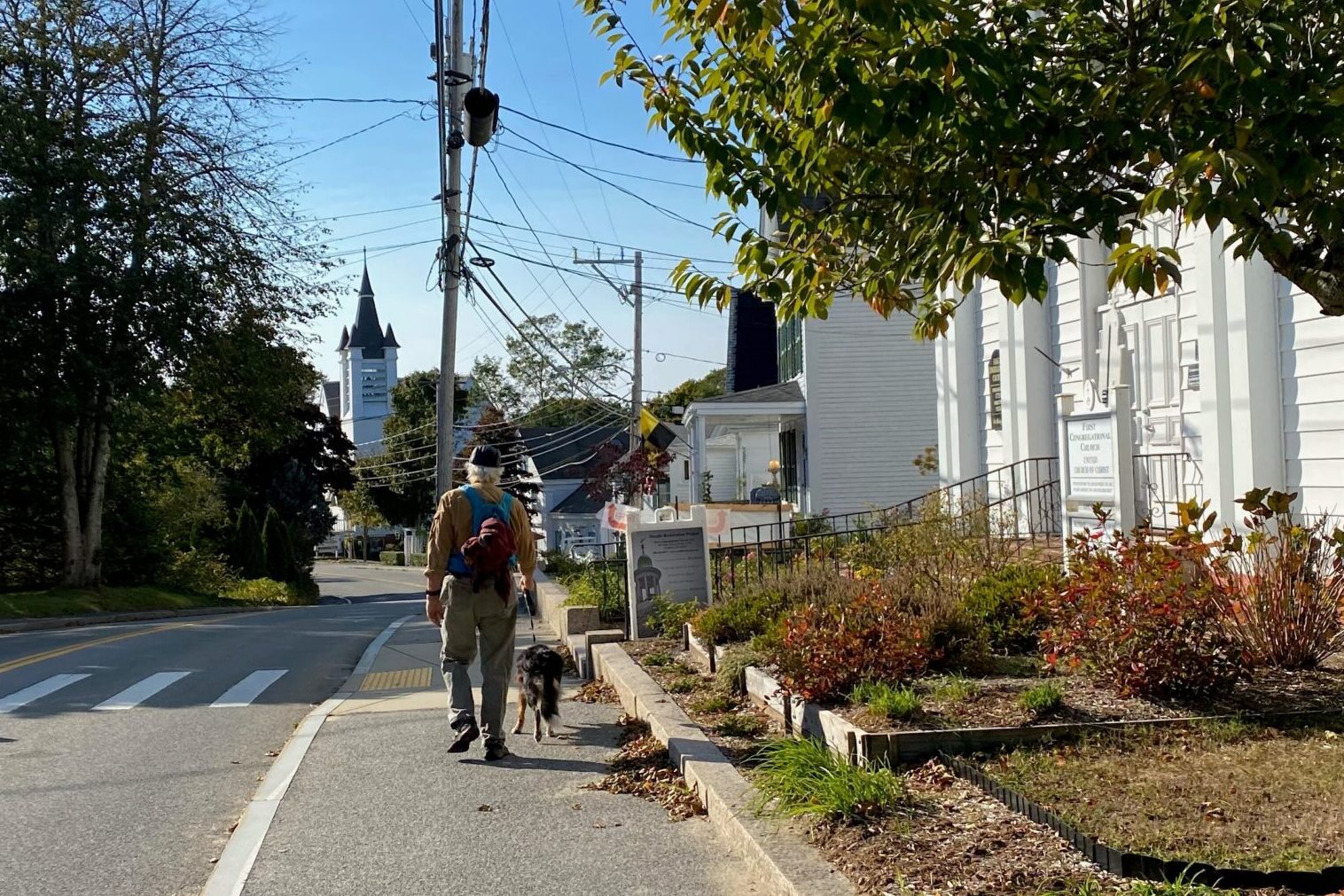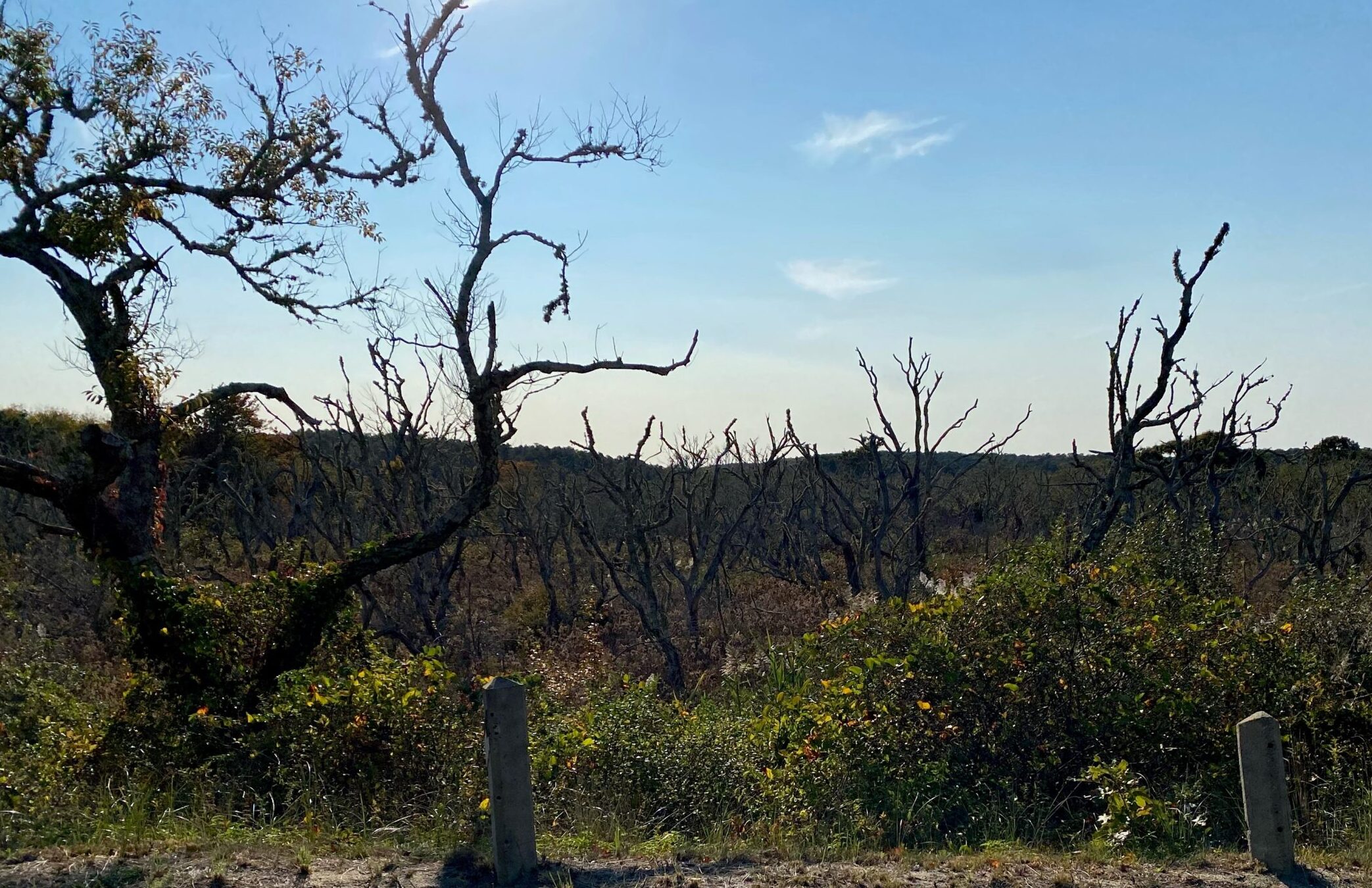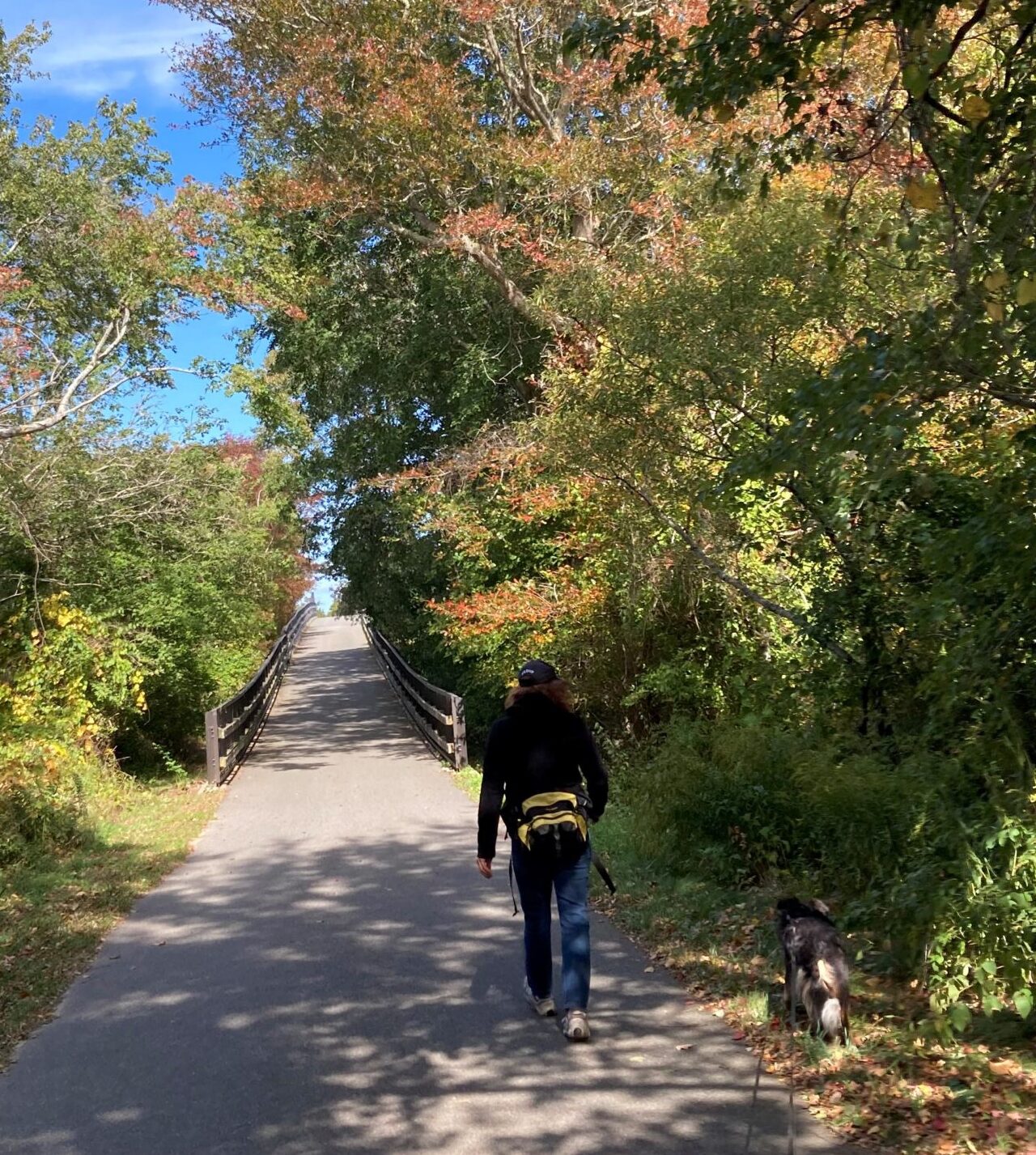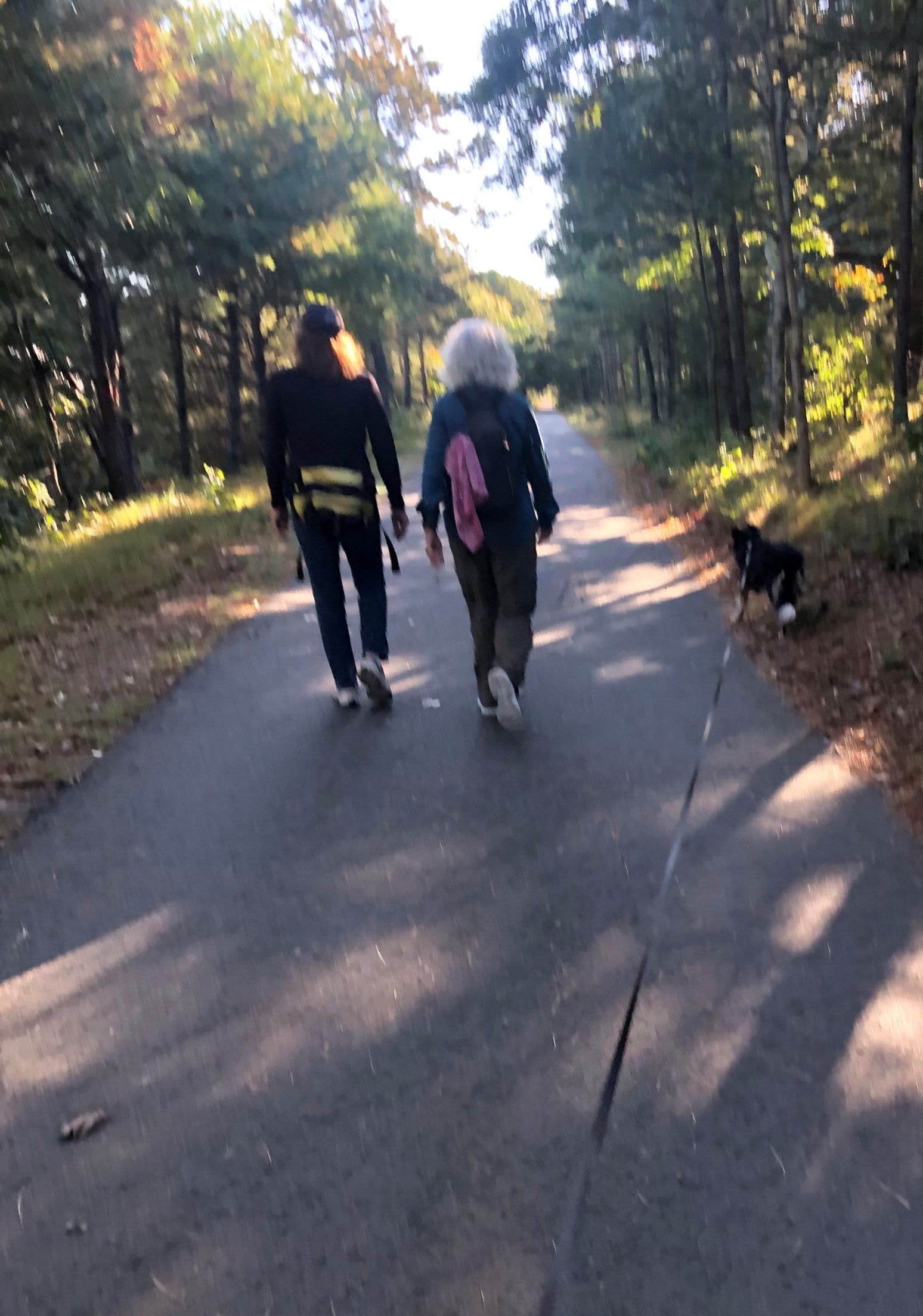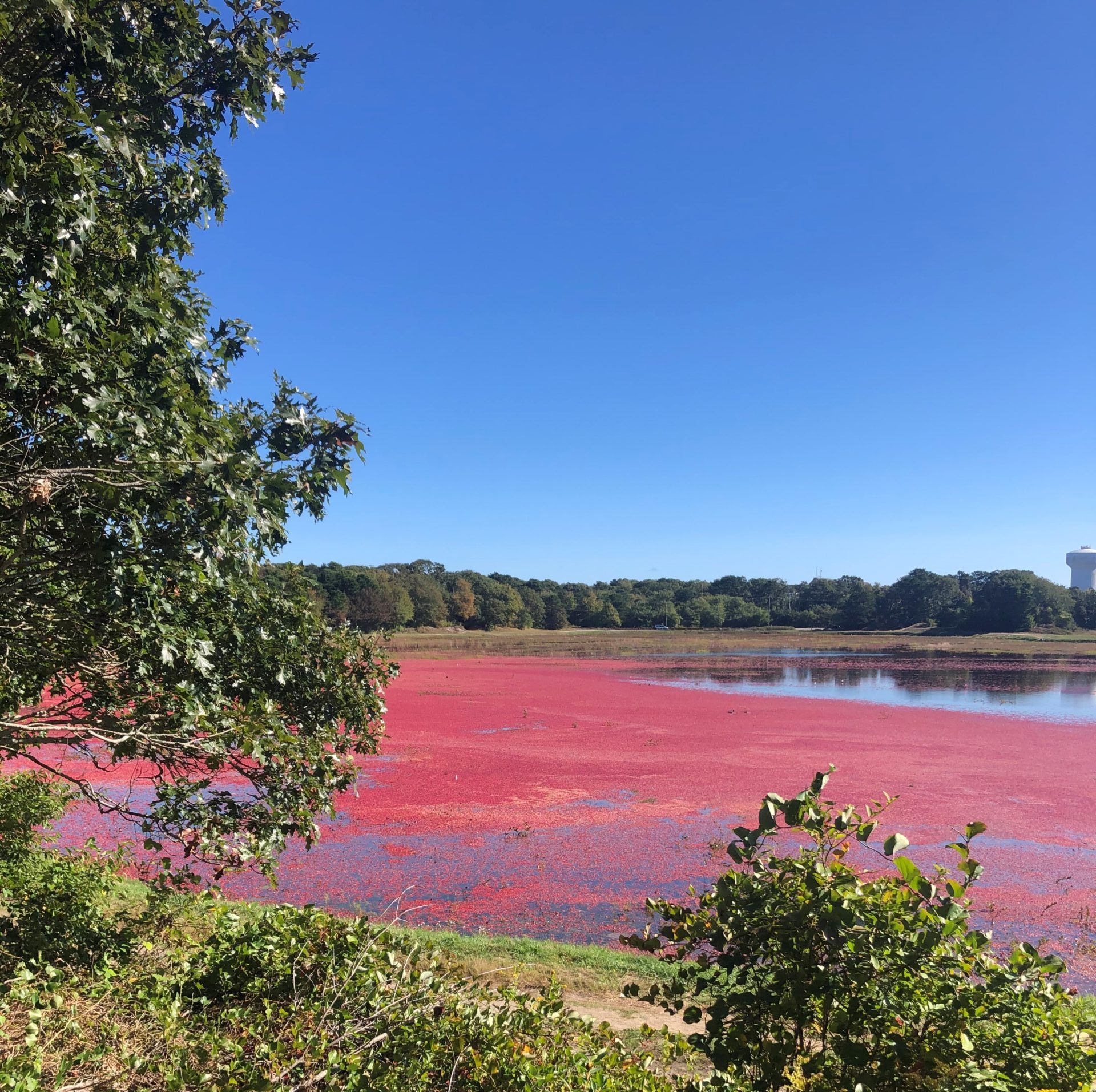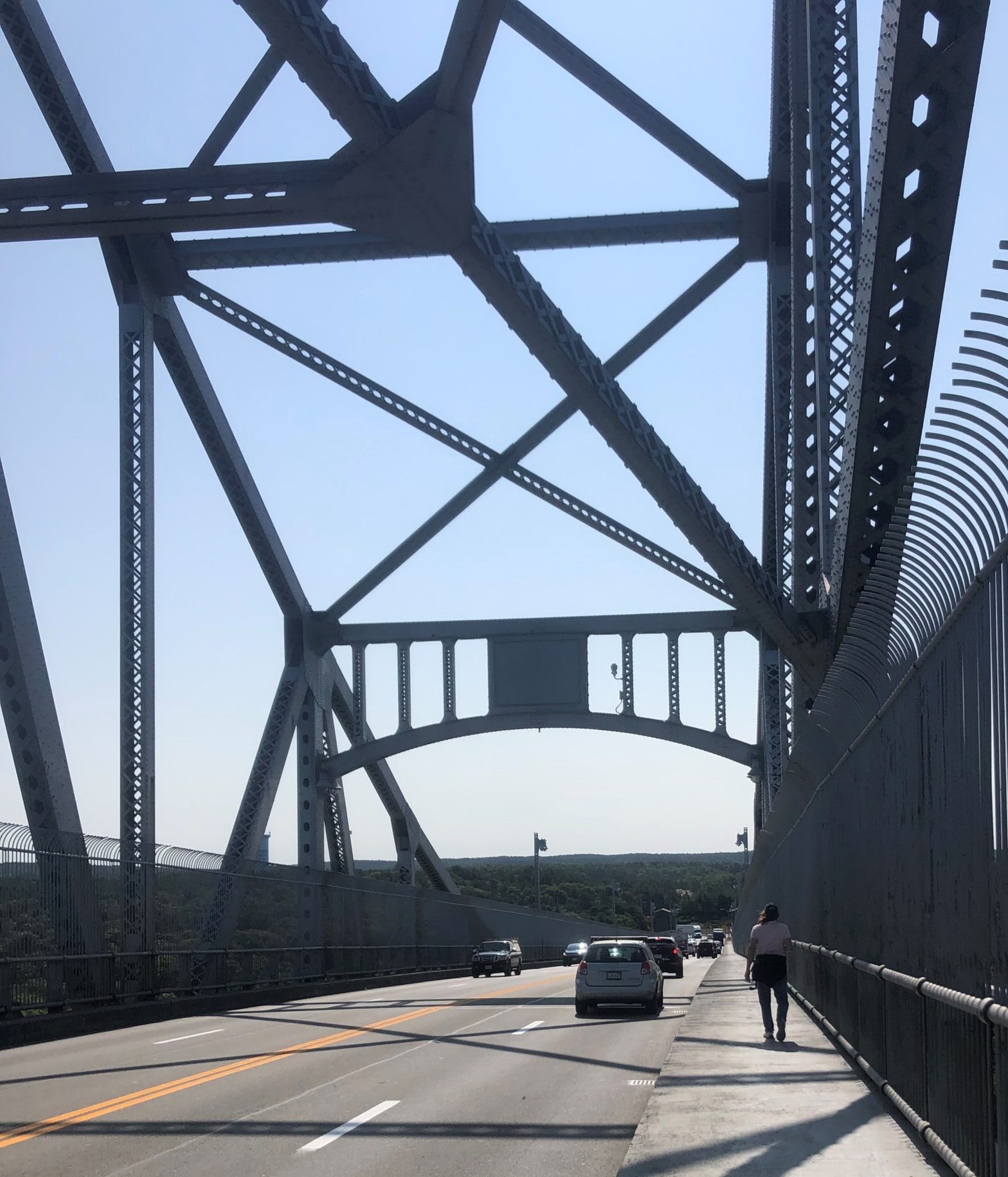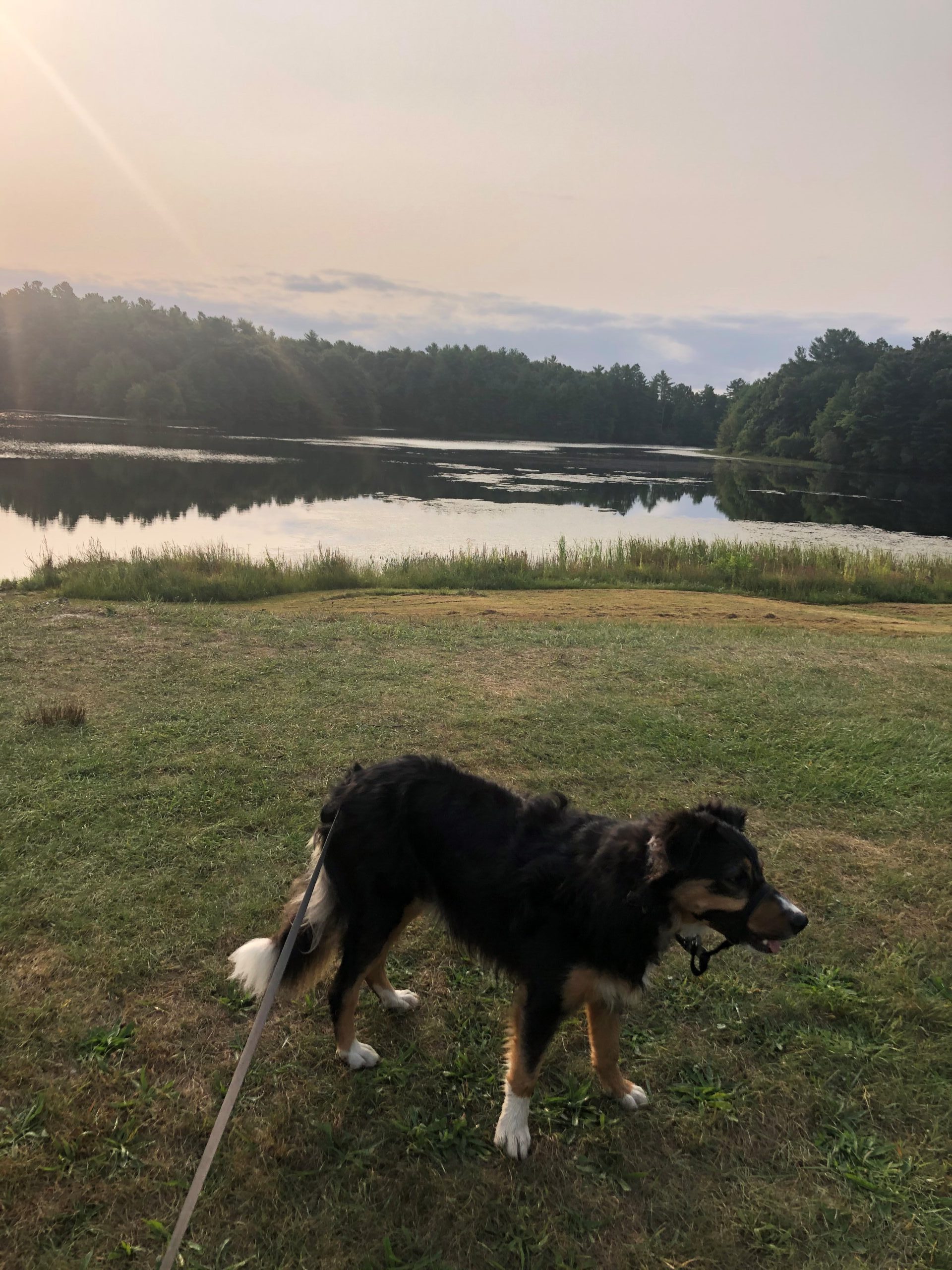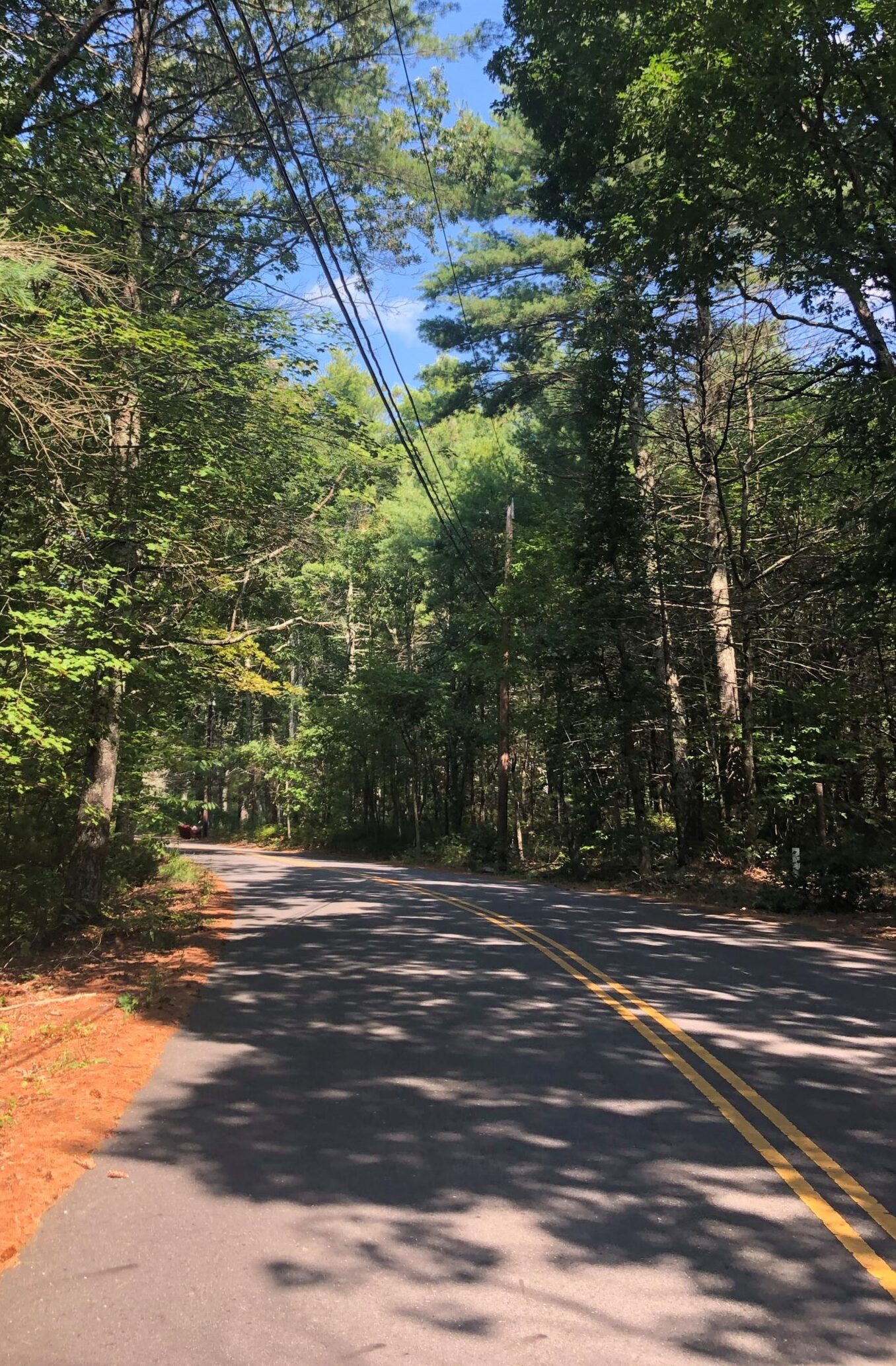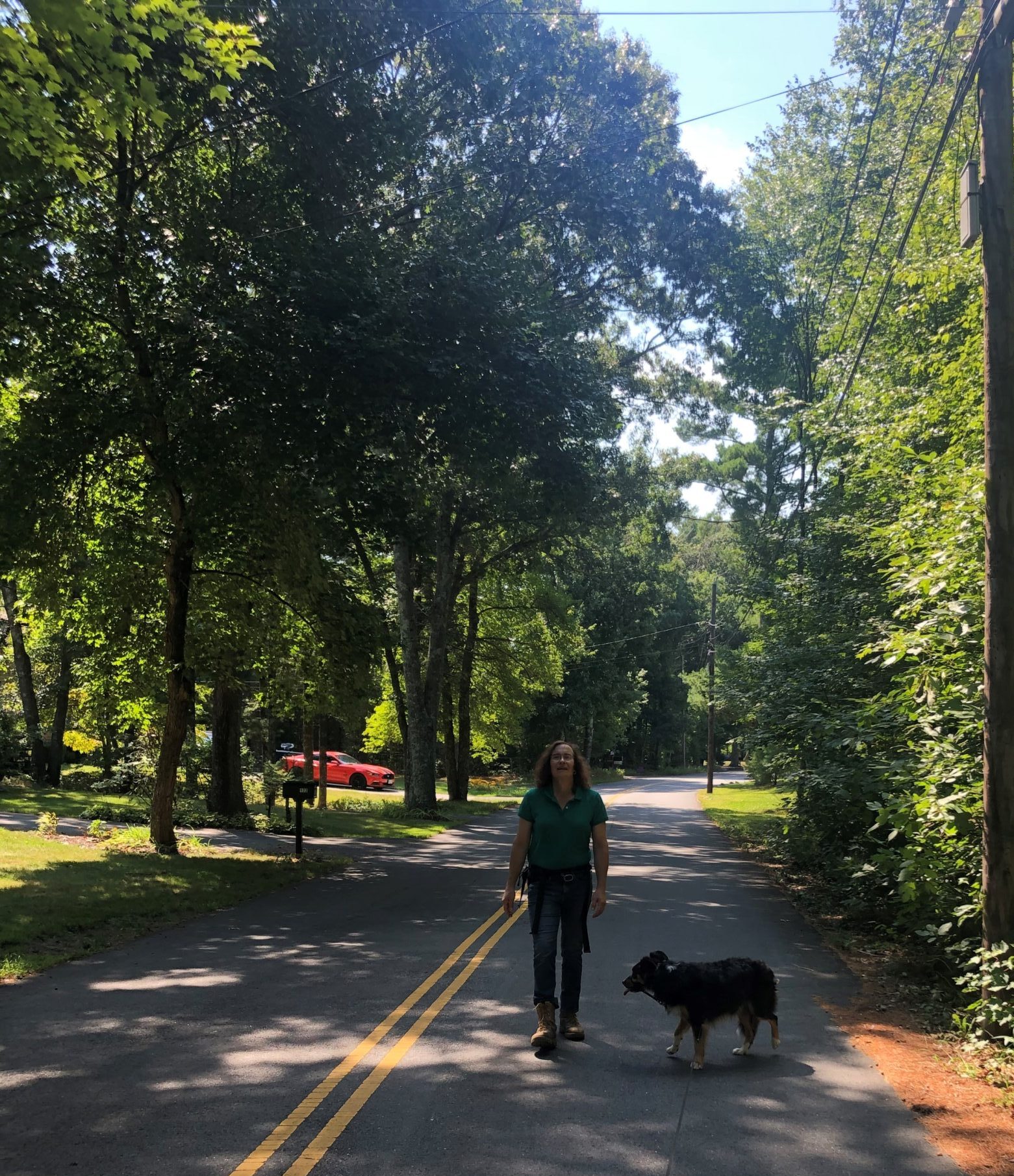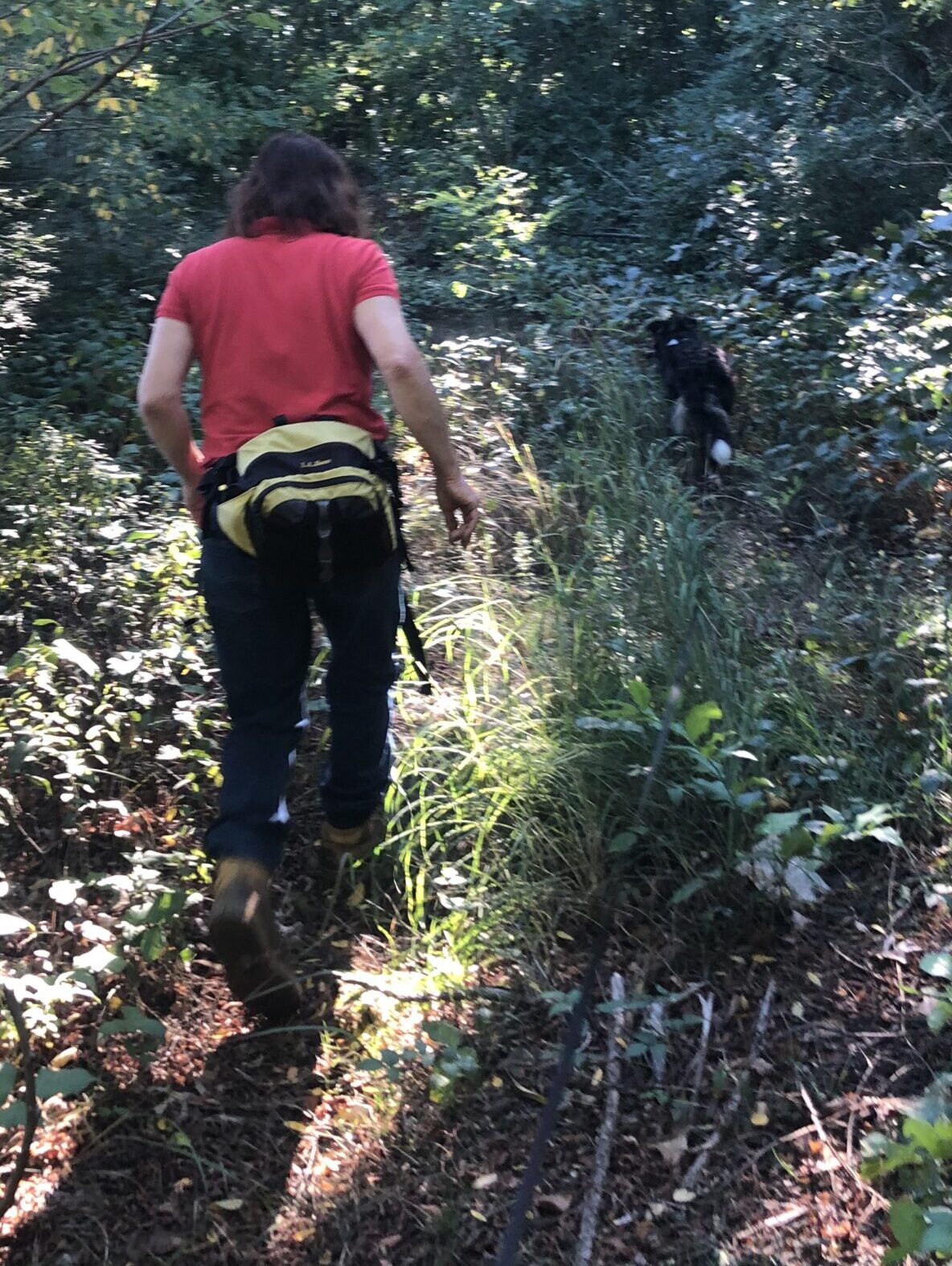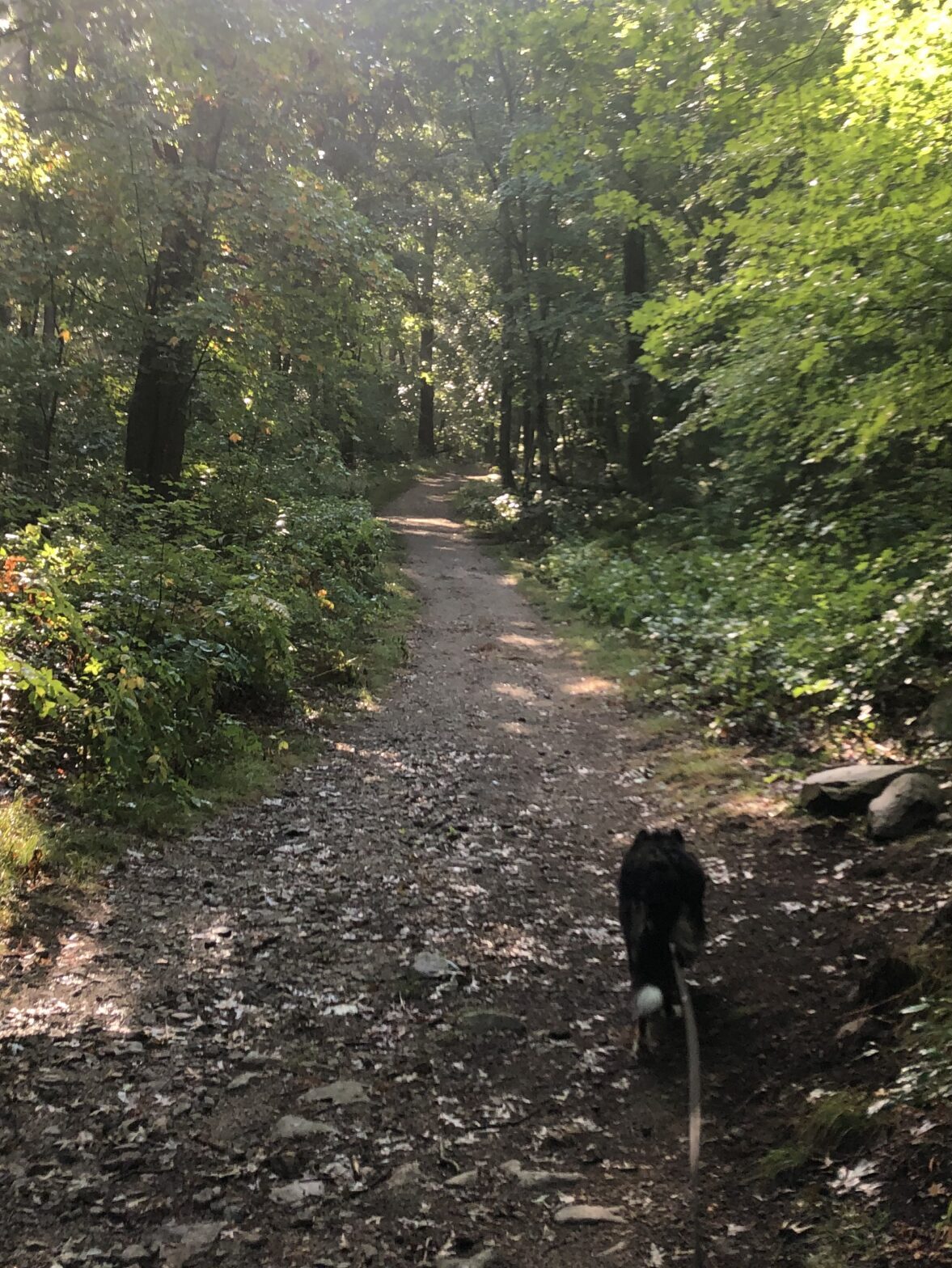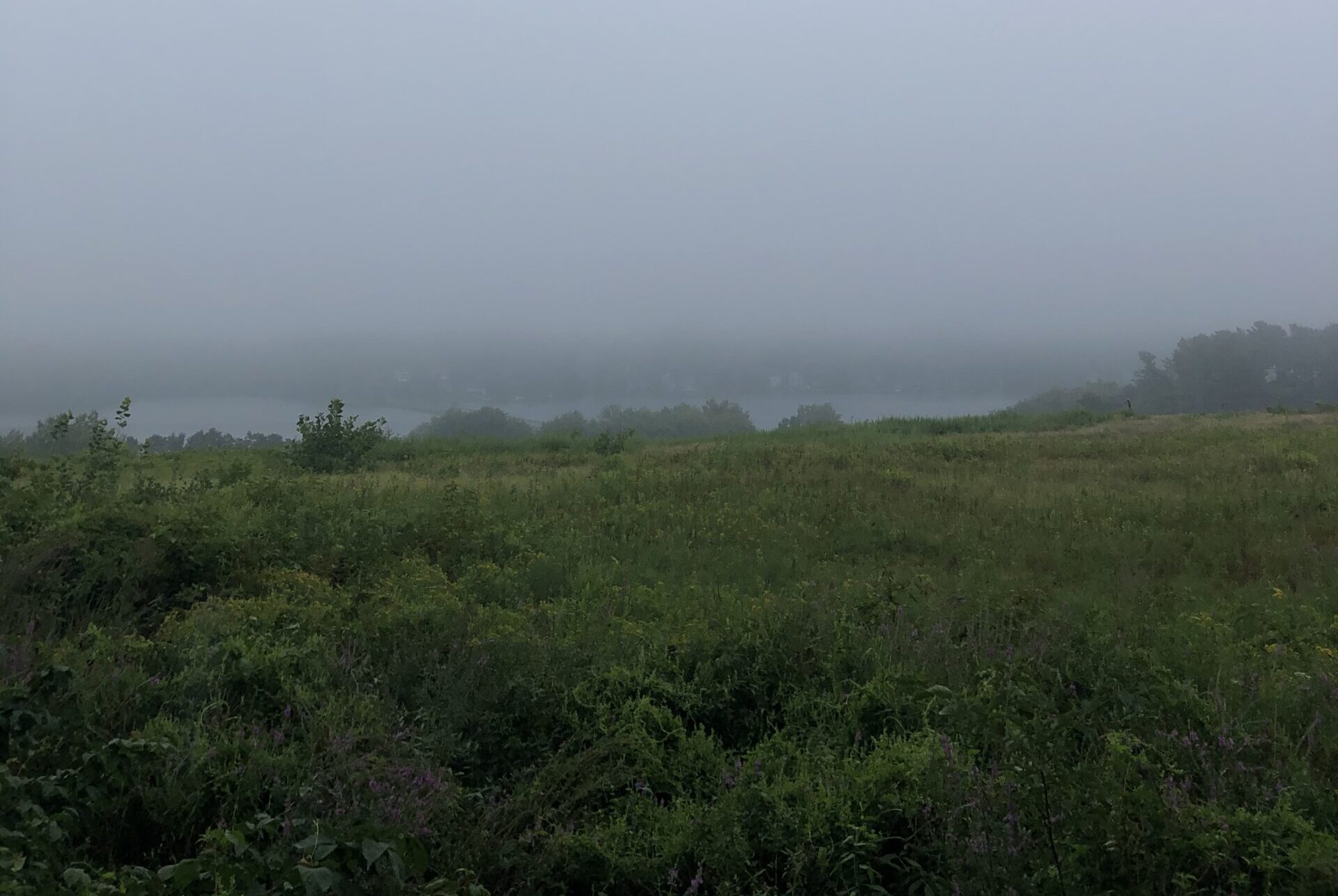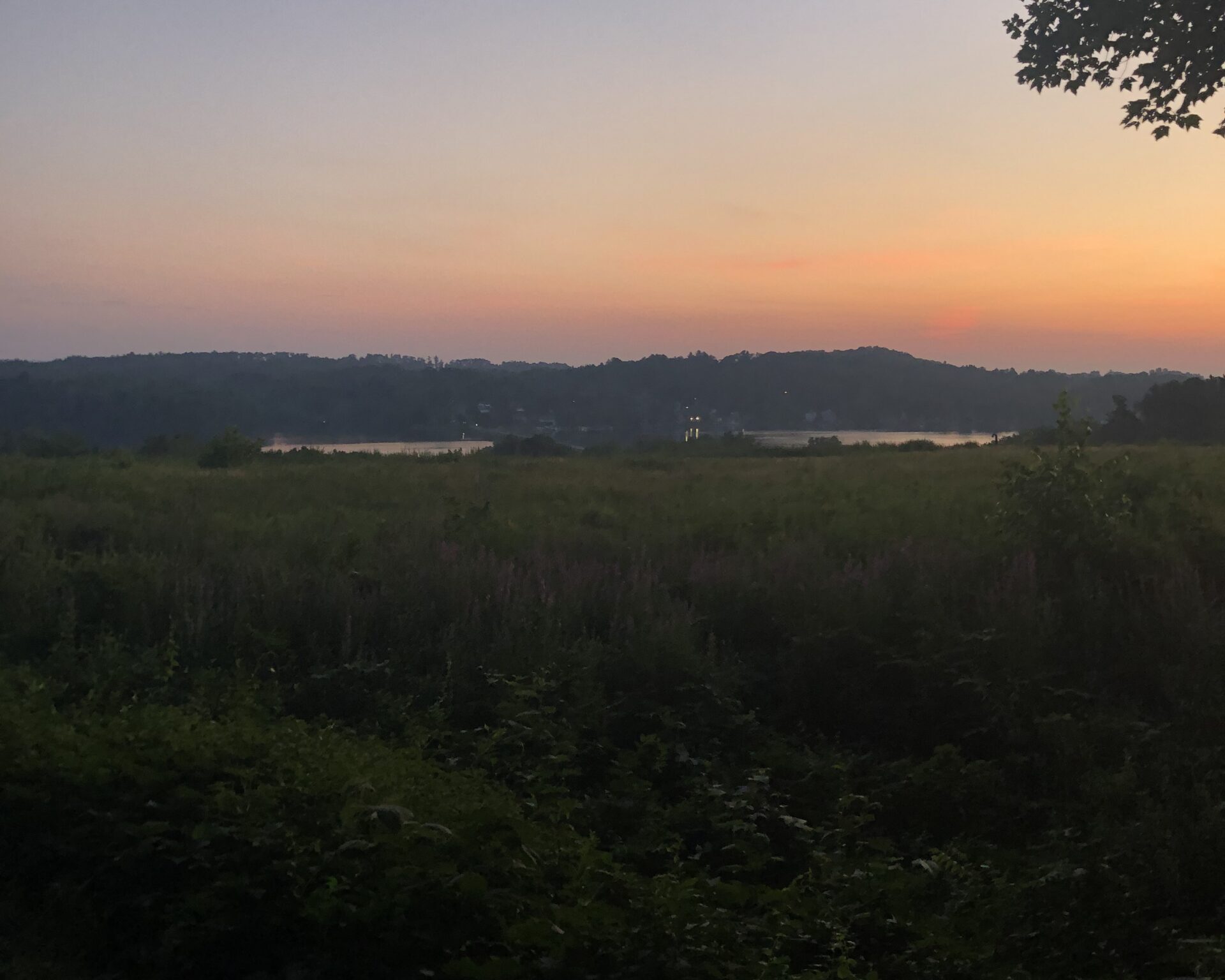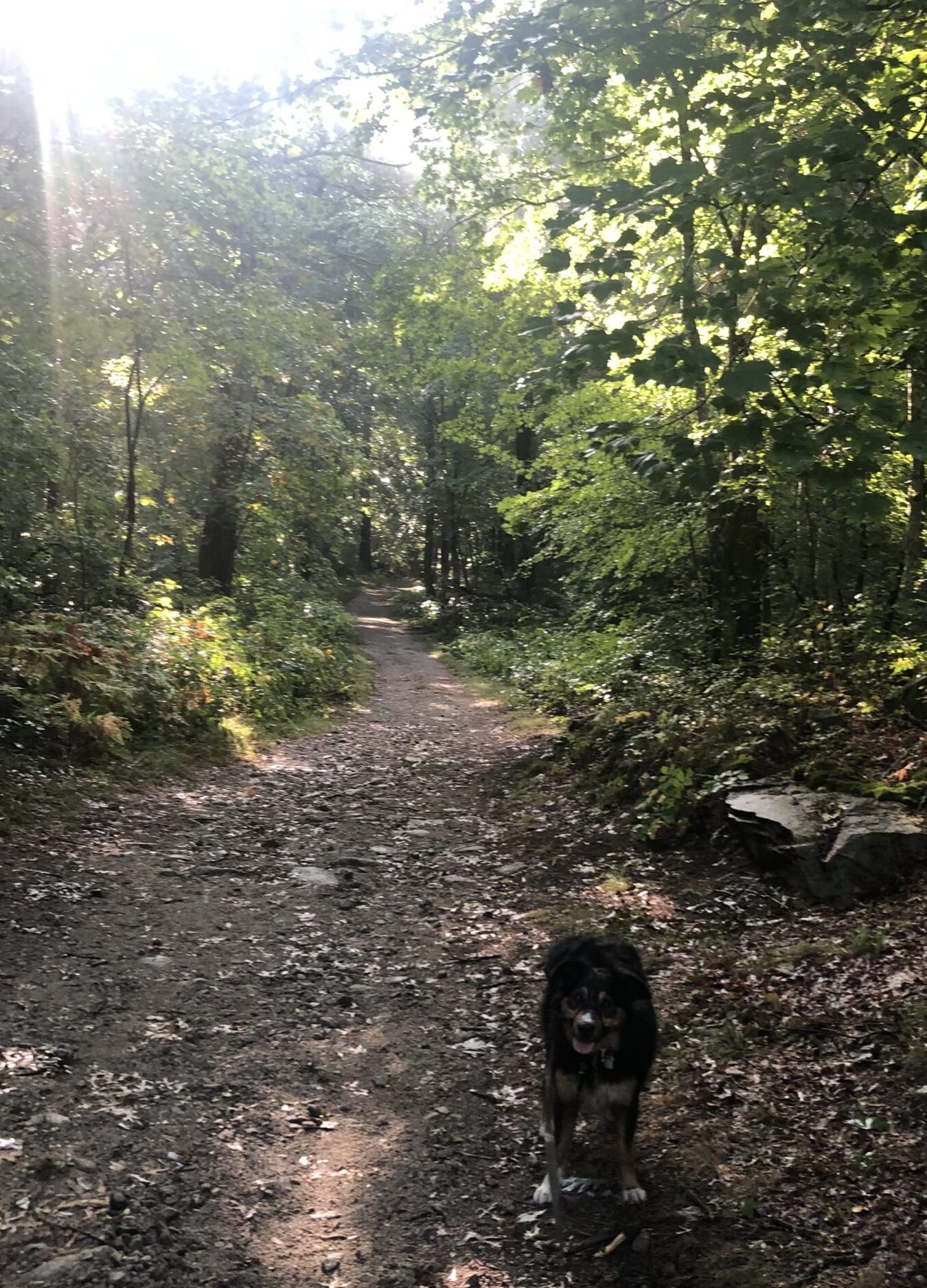Leave the roads; take the trails.
-Pythagoras
Today, we walk from Wellfleet to Truro, about 12 miles north along the path we’re taking. From here on out, the Cape narrows so there aren’t many roads or streets that run north and south, taking us from where we last left off to our goal. We want to avoid the main road, Rte 6, which does run north/south, as it has heavy traffic and, honestly, it’s kinda boring. There are a lot of roads that run from Rte 6 to the shore on both sides of the Cape, but few, on either side, that run lengthwise up toward Provincetown. But we did find a serpentine path, going first toward the Atlantic coast, then crossing over Rte 6 and nudging close to Cape Cod Bay. At the end of today’s trek, we have to go close to, but not on, Rte 6 to avoid a salt marsh. This meandering adds a good 4 miles or so to our walk over what we’d travel on Rte 6, but, hey, we’re not in a hurry. The object is the walk, not the goal.
Over half of the land area of Truro is part of the Cape Cod National Seashore, established in 1961 by President John F. Kennedy. The Pilgrims originally considered the Provincetown and Truro area as a place to settle, but then decided that the area was unsuitable. Some 7,000 Wampanoag Indians lived there at the time. In the 1690s, it was settled by Europeans, with fishing, whaling and shipbuilding being the major industries. Cape Cod has always been a popular location for artists because of its light (there are also a whole lot of people who feel that it is just a beautiful, peaceful place to live). Its many beaches attract a seasonal tourist trade that thrives today (even with Covid). Truro is the site of Cape Cod’s first lighthouse, erected in 1797. Its population today is 12,607.
We start our trek with a right turn from the CCRT trailhead and walk down a back road toward the Atlantic Ocean. Phyllis is back with us, so Waldo has three sheep to herd today. The temperature hovers around 60 and is a little cool, although it’s two PM. There is a 10-knot sea breeze blowing – just strong enough to make that 60 degrees feel quite nippy. At first, we all wear light jackets against the chill, except Waldo, of course, who wears his all-weather sable birthday suit. It isn’t long, though, and we shed our coats and carry them, once we work up some good body-heat. The sea air is invigorating and we soon make a left turn, just north of the Marconi Wireless Station, and parallel the shore. Looking up, we see several parasails flying just above the surf. At first, we think they’re kites that propel surfboards, but as we get close, we can see that there are people suspended beneath them. What we’re watching is a group of six or more paragliders sailing in the soft wind just inshore. An adventure for the future? Possibly…
We talk about all manner of things as we plod along, and today, the conversation revolves around what kind of a civilization could be built, knowing what we know now, if there were only seven million human beings alive on Earth instead of seven billion. It seems like a relevant thing to think about, given Covid and all, and I’ve often wondered about it in a Utopian kind of way. Think about it. A lot of our problems would just go away, but we’d have to give up some things too. Many of our needs could be supplied by robotic industries, including farming. But would there be enough people around to continue researching medical interventions, like medication? The production of medicines could be automated, but the research? Doubtful, with what we have to work with now. Just how much would such a civilization have to give up? How much of that would be worth it in order to reap the benefits of a smaller population? The miles fly beneath our feet.
Turning back west, we walk just north of Long Pond and are soon crossing over Rte 6. A right turn down Main Street, a two-laned narrow road, takes us through downtown Wellfleet. It’s a quaint New England town with small wooden shops lining the street. After that, we’re on a narrow back road, with little traffic, that skirts salt marshes and runs close to the shore on the Bay side of the Cape. We’re inland far enough that we can’t see the bay and our path is surrounded by short scrub pines. In a little over four hours from the trailhead, we’ve come to our car where we left it in the parking lot of the Truro Historical Society. Today’s trek was twelve miles, though it didn’t feel like it was that far.
Beautiful days, cool temperatures, smooth paths and good company will do that, you know.


